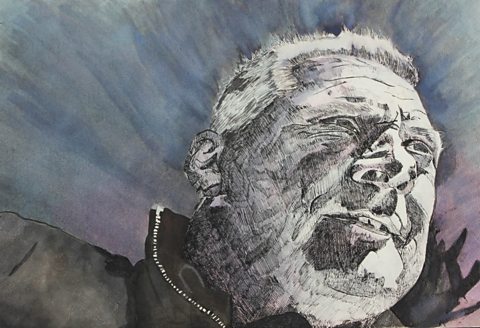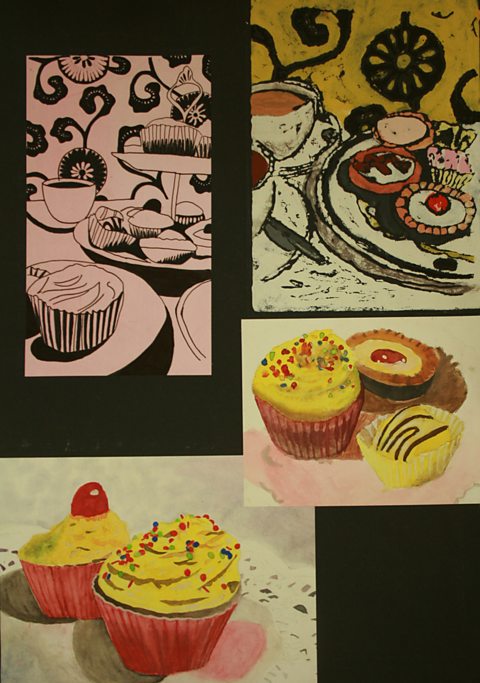Exploring composition in expressive work

Changing the angle of a portrait and the distance from your subject can make your composition more dramatic

Development for a still life could involve using different viewpoints and changing arrangements.
You should make development studies, such as drawings and paintings to show experimentation with composition. If you are working in 3D, you might make sketches and maquetteA small model to help plan a finished work, such as a sculpture or architectural model..
There are a number of different ways composition can be developed:
- Move objects around in a still life or change the pose in portraiture or figure composition.
- Try different arrangements, eg linear, triangular or circular compositions.
- Change how natural, organised, busy or sparce your composition is.
- Use different amounts of negative spaceThe space between objects in a composition., showing more or less background.
- Experiment with leading linesLines within a composition which lead the viewer’s eye to the focal point, or which create an illusion of distance. to draw the viewer's eye into the composition.
- Change the height and angle of your viewpoint.
- Use frames within frames eg looking through objects to frame elements of the composition.
- Create a cropped composition by zooming in to a specific area.
- Try different backgrounds.
Using technology
Taking photographs of different arrangements can help development:
- You can try out different viewpoints and arrangements quickly.
- It is easy to change between landscape and portrait format to try different effects.
- The camera's viewfinder can be used to 'frame' compositions and preview the result.
- Working from photographs can be more practical for subjects that might move or where conditions might change
- New compositions can be created by cropping existing images digitally.